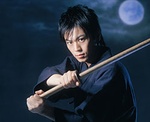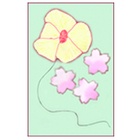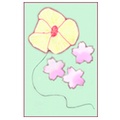I listen to enka. Mostly in the car. Enka is a traditional form of Japanese music that originated in both the Meiji (1868–1912) and Taisho (1912-1926) periods. Popular enka, what is mostly on the market today, can be likened to old American folk and country music for its themes. The term enka comes from en , which means public speech and ka , song. It began as a form of political dissent - speeches set to music to make them spread more easily.*
I became an enka fan in 2005 after watching the annual “Kouhaku” NHK-televised music program on New Year’s Eve. I was visiting family and staying at my aunt’s house in Fuchu, a Tokyo suburb, for winter vacation. I remember standing in the kitchen with my grandmother preparing osechi – traditional New Year’s food – when I heard from the television a powerfully strong and vibrant man’s voice singing enka. The voice was so captivating that it literally drew me to the television set. I nearly hit the floor when I saw that the voice was coming from a baby-faced twenty-something year old. I learned that it was Hikawa Kyoshi, a national celebrity and incredible singer who revived enka when it was down in the dumps. His last name, Hikawa, was a stage name given to him by Takeshi “Beat” Kitano, the famous Japanese film director. I was inspired. He sung with soul. My grandmother said that she loved listening to “Kiyoshi.” He is especially popular among older Japanese women, and everyone in Japan calls him by his first name. He's also known as “The Prince of Enka.”
The first album of his I bought was “Enka Meiyoku Collection 4 – Banba no Chutaro.” On my way back to my aunt’s house from Hachioji, I stopped at a CD store at the train station. The first thing I saw was a poster of Kiyoshi on the store wall and his album displayed in the Top 20 area. I excitedly grabbed the double CD set with a handsome picture of Kiyoshi on the album cover and took it to the cashier. The young woman at the register looked utterly surprised as she scanned the CD barcode. I couldn’t tell whether her look of confused curiosity was because I didn’t look Japanese or that she couldn’t believe a young person would choose enka over the thousands of other popular J-Pop albums. It could’ve been both. She might have thought to herself, “Why is a young white American girl buying what old Japanese people buy?” The possibility of me being overly judgmental and assuming did cross my mind, but instinct told me I was right the first time.
As the cashier meticulously processed my purchase, I could not help but think about the apparent differences between Japanese and American customer service. With perfect posture, her back straight and hands proper, she neatly placed my Hikawa Kiyoshi CD and receipt in a fitted bag and taped it shut. She placed in front of me a small green tray that had tiny rubber spikes to place my yen on. I believe I will never see customer service like this in an American music store.
I asked her in Japanese what she thought of the album I purchased. She said she doesn’t listen to much enka; only with her family when they watch “Kouhaku” together. She also said that I had good taste in enka for liking Hikawa Kiyoshi.
My favorite tracks on the 2004 “Collection 4” album are the first, third and sixth on Disc one. He does what I call the “enka thing” where he makes his voice sound like it’s echoing, a common thing most enka singers do with their voice. Kiyoshi does the “enka thing” on all the tracks, but it sounds especially good on the three particular tracks I like.
While enka isn’t new to me, I’m surprisingly glad that I’ve developed a genuine liking for it recently. I’ve been hearing it as a child – during New Years, at Japanese restaurants and markets, on Japanese videos my mother used to rent and watch. I never imagined myself listening to enka in the car, singing along with Kiyoshi. I have no plans to start a career in enka. I’m just excited that it’s back in popular demand thanks to Kiyoshi.
*www.wikipedia.org
(cc) DN site-wide licensing statement





